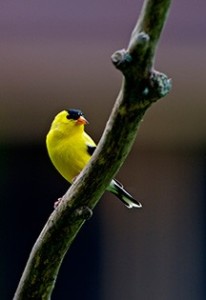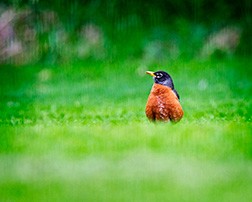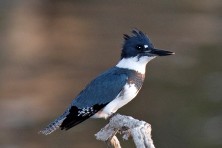OutDOORs with Coggin Heeringa: Seeds In Winter, Bugs In Summer
- Share
- Tweet
- Pin
- Share

Goldfinch.
It just doesn’t seem fair. All winter we risked life and limb, trudging through icy drifts to fill our bird feeders and now that the weather is nicer and the birds are more colorful, they seem to be visiting feeders less and less often.
Except for goldfinches (and they breed in late summer), birds really aren’t eating that many seeds this time of year. Most of the birds that nest in Door County, even the ones we think of as seed eaters and fruit eaters, even nectar eaters, change their diets during breeding season. Now they are glutting on insects.
According to ecologist Douglas Tallamy, “If you count all the terrestrial birds species that rely on insects and arthropods (typically, the spiders that eat insects) to feed their young, you would find that figure to be about 96 percent (Dickenson 1999) – in other words, nearly all of them. And no wonder! Insects are unusually nutritious. Pound for pound, most insect species contain more protein than beef, and their bodies are extremely high in valuable energy.”
To feed their young (and themselves) during breeding season, most parent birds in Door County prefer caterpillars – the larval forms of butterflies and moths. Caterpillars are voracious eaters. Although they eat prodigious amounts of their host plants, these immature insects are downright finicky.
There are a few insect species that will lay their eggs on any plant they find, but the vast majority of butterflies and moths (an estimated 90 percent) specialize on one or two, maybe three, host plants. The best-known example is the Monarch Butterfly, which lays eggs only on milkweed plants. Understand that most butterflies are every bit as selective as the Monarchs, and that native insects lay eggs exclusively on native plants.

Robin.
A surprising number of Wisconsin butterflies lay eggs on the leaves of trees such as oak, ash, black cherry, birch and maple. Conifers and shrubs can be host plants. Some butterflies specialize on the foliage of specific wildflowers. But introduced plants – plants from other parts of the world – are rarely the host plants for butterflies.
The obvious conclusion is that if you want to have butterflies around your home, you need to have native plants around your home. Less obvious, but true, if you want songbirds to nest and raise their young around your home, your land, or in places you hike or bike or paddle, there must be native plants on which native moths and butterflies can lay their eggs. No caterpillars, no baby birds.
To enjoy birds in the wintertime, fill your feeders with seeds. To enjoy birds in summer, fill your property with native trees and flowers. And don’t worry about being over-run with caterpillars. Hungry birds will eat most of them.

